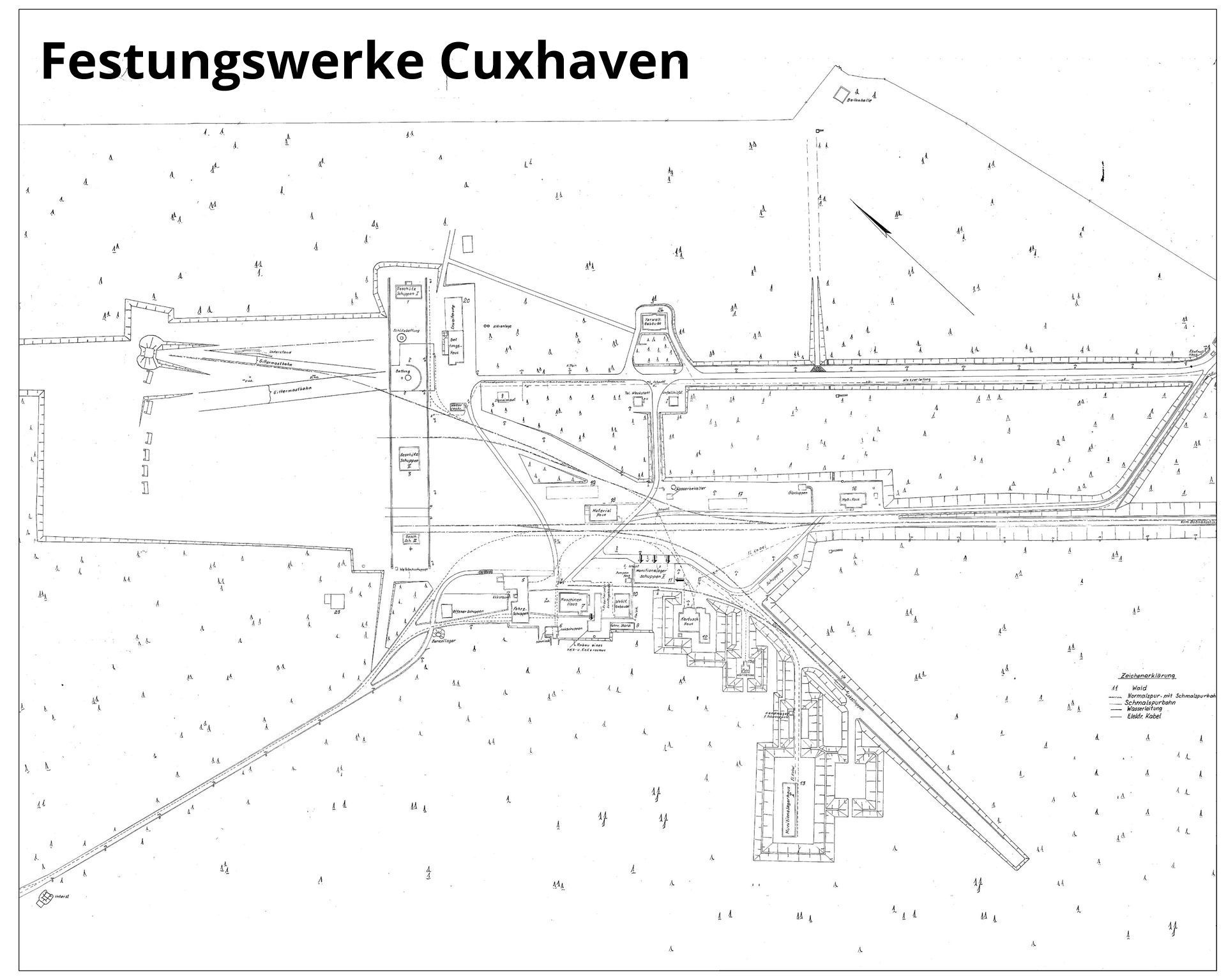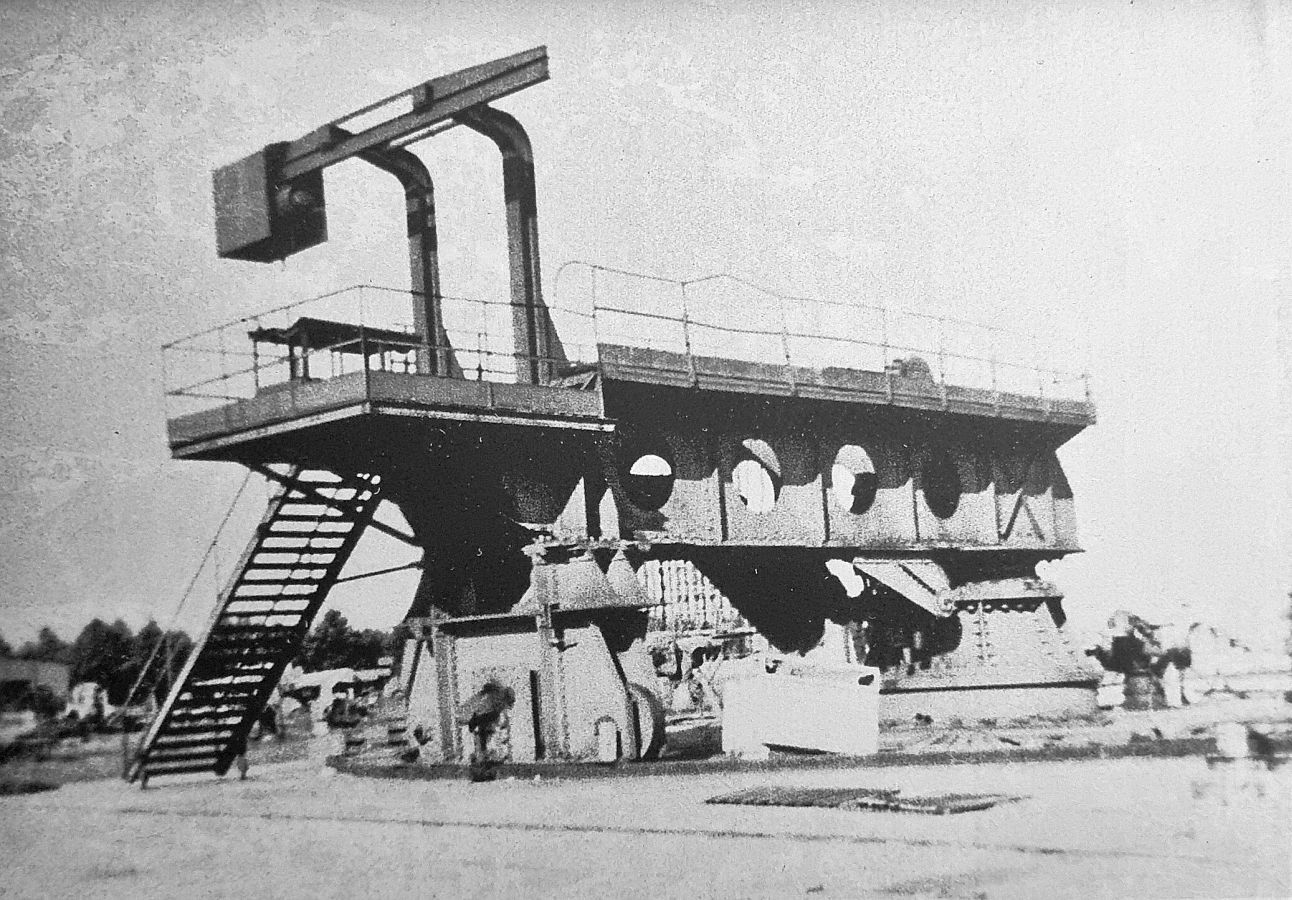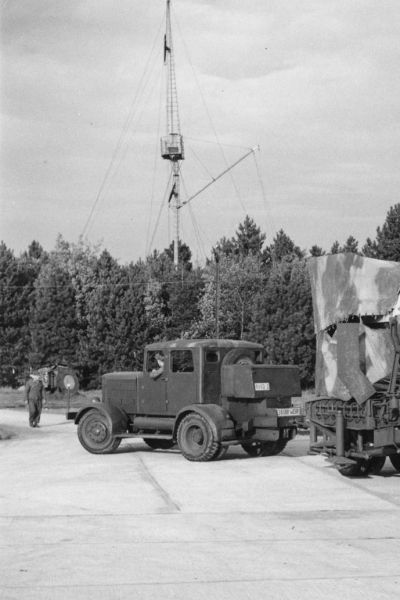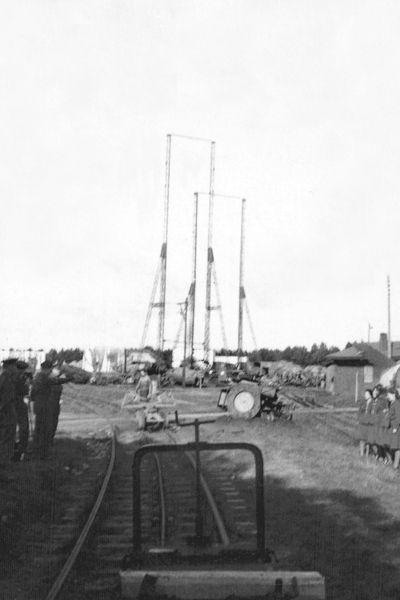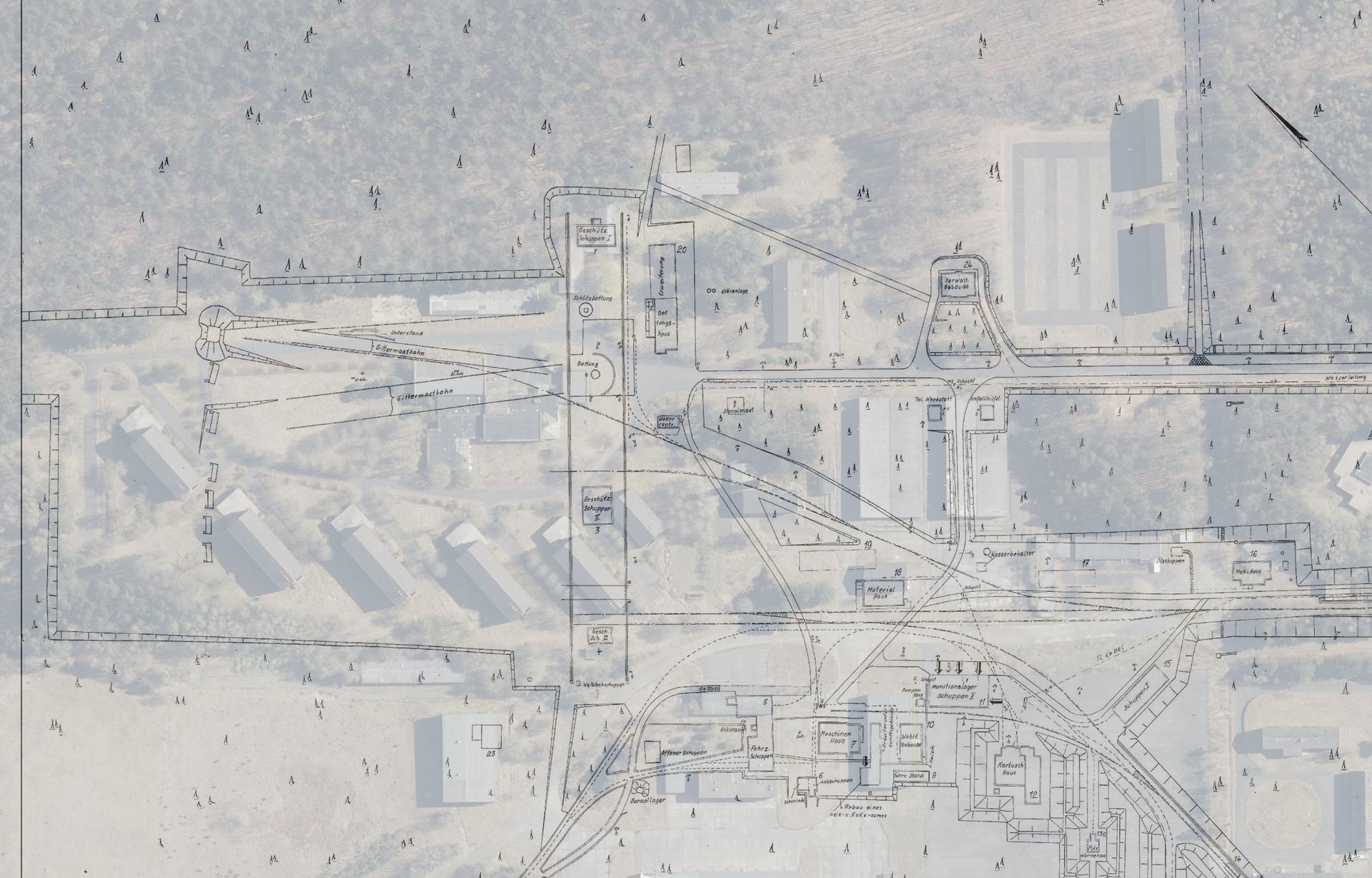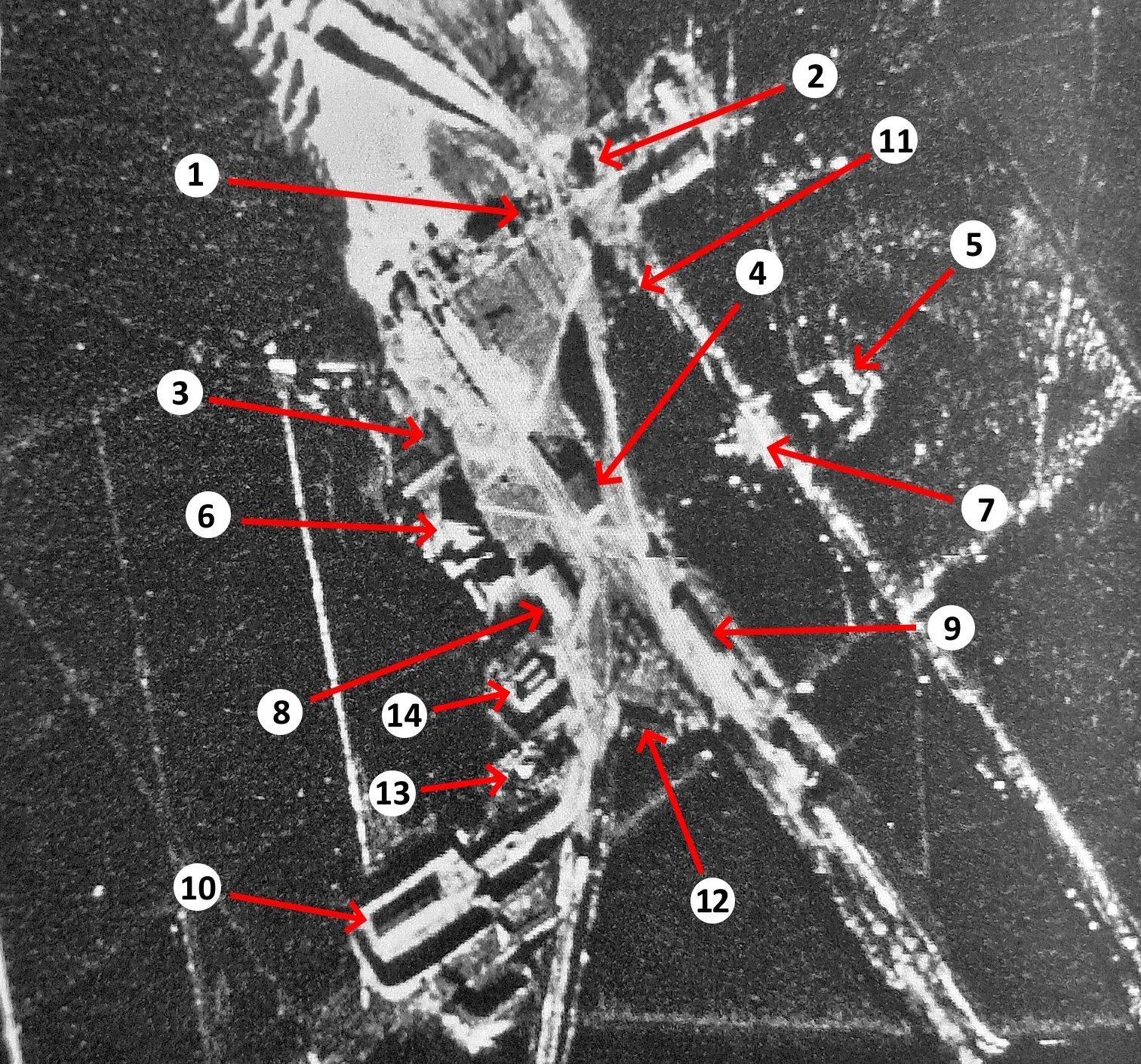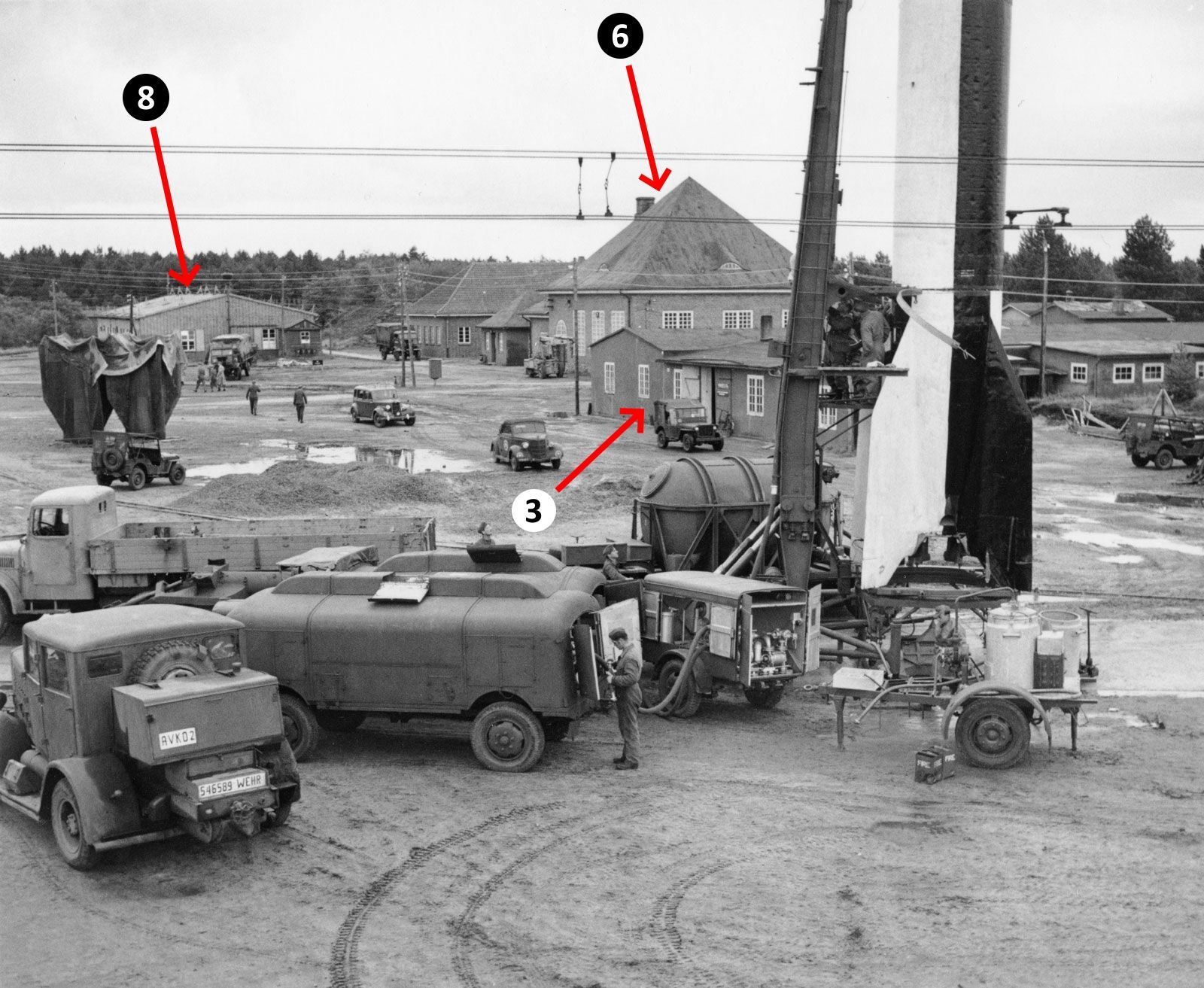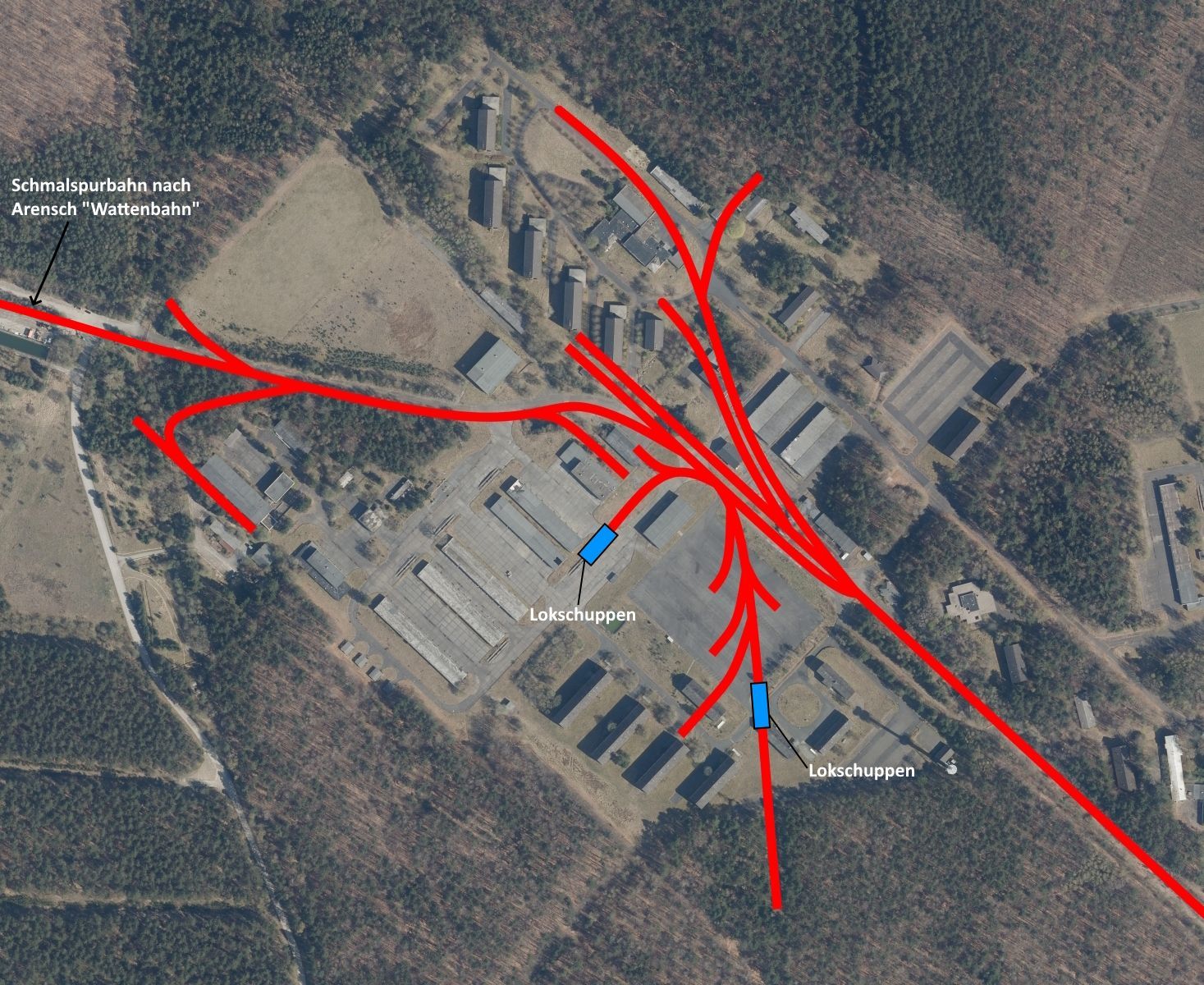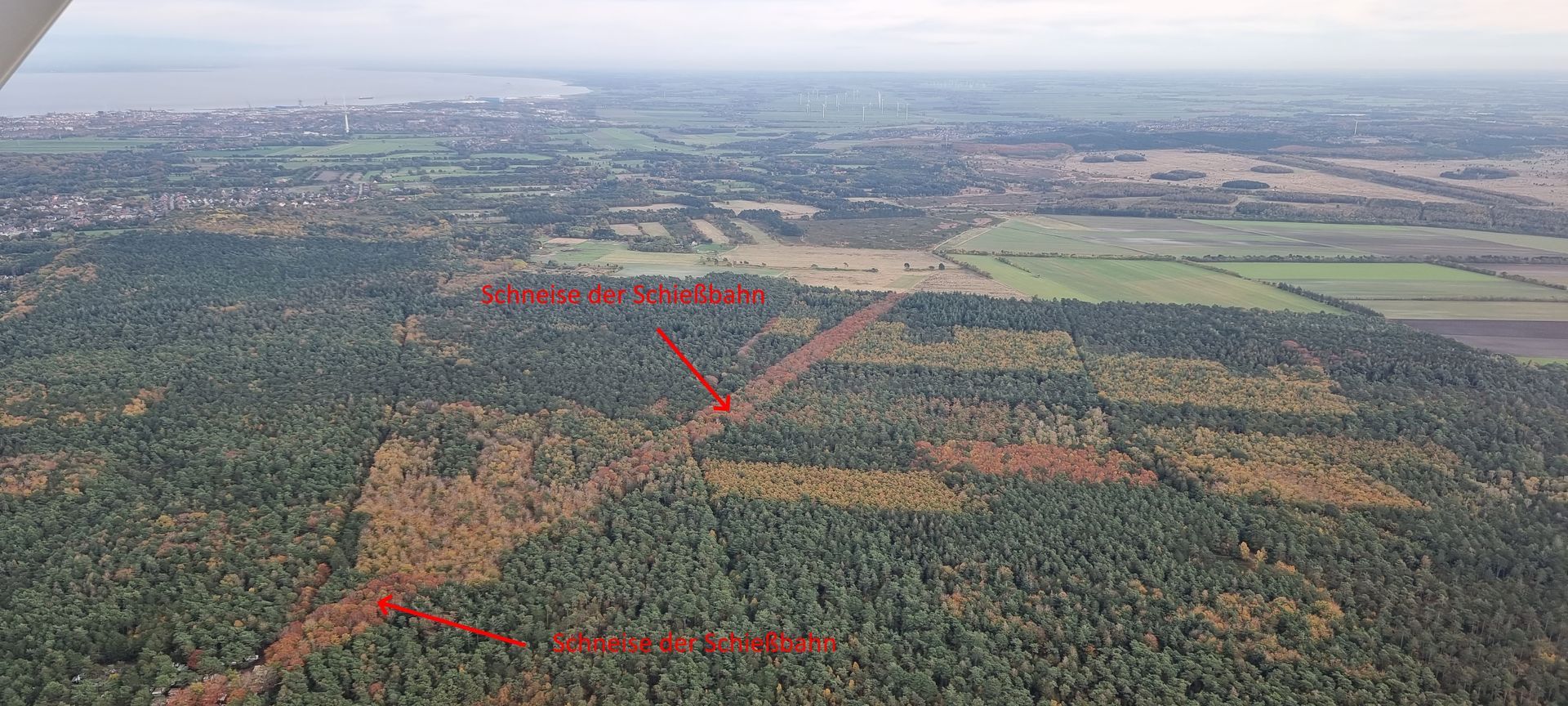
The time of the Imperial Navy (from 1892)
As early as 1892, the Imperial Navy used the Altenwalde Heath area in Prussian territory to carry out maneuvers for its own troops. However, planning already required additional land by the sea and in the mudflats for future expansions and tasks, which even then largely belonged to the city of Hamburg. The Imperial Navy Office planned to build another test site with an unrestricted field of fire towards the North Sea next to the existing firing range in Meppen. The decision was then made to build the Cuxhaven site with its heathland to the northwest and its sparse population. This is where the Altenwalde naval artillery firing range was built, with the Altenwalde firing base on the eastern edge of the area. From 1912 onwards, large-caliber naval guns began to be fired into the Wadden Sea, but only into the Prussian, western part. It was hoped that the Hamburg area around the island of Neuwerk could be used for weapons tests in the short term, but this turned out to be a lengthy process. After years of tough negotiations with the Senate, despite great concerns and the expected high level of noise pollution, it was finally agreed in the last quarter of 1918 that the Hamburg mudflats could also be used. However, the contract only allowed shots south and west of Neuwerk on a few days a month, and the Elbe fairway was not allowed to be hit. Approval for a firing lane across the Wernerwald was also approved, including all the necessary safety measures. The center of this test facility was primarily the area of the former Panzergrenadier Battalion 71/73 in what was later to become the Hinrich-Wilhelm-Kopf barracks (German Armed Forces, finally disbanded in 2014). A camp was already built here at that time with appropriate equipment for firing the cannons into the mudflats or at close-range targets (armor plates) for fire analysis. All calibers of the Imperial Navy of the time up to 30.5 cm were fired from there. From July 23, 1917, the long-range gun "Wilhelm", better known as the "Paris Gun" of the Krupp company, was also fired in Altenwalde. After the end of World War I, the firing range continued to exist for the Navy. In the period that followed, further land was purchased for possible future use in order to round off the overall concept of the area. This posed a problem, however, because the neighboring farmers were reluctant to purchase any more land. In the end, however, an agreement was reached. In the 1920s, guns for several units of the Imperial Navy were fired. The target area for heavy guns (38 cm) was in the "Jade Bay". During the same period, there was also a powder combustion facility for nitrocellulose powder at the site, which was in operation until 1922.
The time of the Third Reich
From 1932 onwards, the use of the firing base was significantly reduced due to Brüning's emergency decree and the associated austerity measures, and it was placed under the control of the Cuxhaven Artillery Arsenal. But in 1937 the facility was returned to the service of the Navy, which partly manufactured the ammunition for firing operations on site and carried out special tests. New developments in warships, railway guns, other artillery weapons, the various gun types and ammunition associated with them, also required a test field. The High Command of the Navy (OKM) was responsible for this. In addition to several other acceptance offices in the country, there was now also the Naval Acceptance and Firing Command Altenwalde on the firing range of the same name. In addition to general test firing with the various calibres, the corresponding ammunition was also certified here. The annual output in the test facility was up to 150,000 shots. There was a large firing rack for large ship guns, into which the barrels could be inserted. Among other things, the barrels of the two battleships Bismark and Tirpitz are said to have been fired here. Some of the test firing was carried out at very short distances, for which so-called firing positions were built on the site to represent the target. These were a large number of massive reinforced concrete blocks that were built in the northwest area of the firing base. The test field was surrounded by a bullet trap made of earth and sand that was several meters high. The aim here was to test the penetration power and effect of different types of ammunition. The practice ammunition used for direct fire was usually filled with tar. The area up to the mudflats was used as an impact area for medium firing distances. In the second half of the war, another field with firing positions was built west of the existing facility. The Altenwalde firing base was further expanded until 1940. According to their function, the buildings can be divided into the areas of "shooting and measuring operations", "shooting operation supply facilities", "general supplies" and "supply and disposal facilities". The buildings belonging to the "shooting operation" were: the main bedding in the northwest of the firing base, which consisted of a concrete foundation up to 6 m thick, around 30 m wide and around 35 m long. Directly next to this was a slotted bedding in which different types of guns could be swapped out relatively quickly for tests. In gun sheds I, II and III, maintenance and cleaning work was carried out on the artillery guns that were to be fired. Other buildings for the "shooting operation" included a 160 ton gantry crane system in the area of the main bedding, an earthen wall and numerous earth-encased concrete blocks that served as bullet traps, as well as the track systems.
For the “measurement operation” there were two lattice mast tracks (measurement of speed, spin, deviation, etc. of the artillery shells), three bunkers or observation posts, a bedding house in which the results of the firing tests were probably evaluated, a weather center, a balloon hall and a measuring house (maintenance and storage of measuring equipment) on the site.
The buildings in the southeast of the firing base, which were surrounded by earthen ramparts, are classified as "supply facilities for the firing operation". Ammunition was stored and probably also prepared in the cartridge house, the powder warming house, the hand magazine for black powder and the ammunition storage house I.
The ammunition storage building II was not surrounded by earthen ramparts and was probably only used for storing ammunition. Other facilities include the forge with locomotive shed, the oil shed, the material house, the benzene storage facility and the vehicle shed with battery room.
The "supply and disposal facilities" area of the firing base includes the water tower, the fire water tank, the pump house, the sewage treatment plant and pit and the transformer stations. For general "supply and administration" there were the welfare building, the workers' accommodation building with heating and coke room, the administration building, the telephone workshop and the accident assistance station on the firing base. There was an extensive rail network for the standard gauge railway across the entire area, which was connected to the Reichsbahn network. The heavy gun parts could be driven directly to the beds of the test facility on this. It was also possible to drive railway guns directly to the firing base. There was also a narrow-gauge railway for transporting goods, and a track (colloquially known as the 'Wattenbahn' at the time) ran across the entire firing range to Arensch.As an extension to the site, a secret test facility was built in the south-western area of the facility in 1943, including launch ramps and an assembly hall for cruise missiles, under the strictest secrecy.There was also a ring-shaped blasting site in the central heath area, where ammunition could be detonated to determine its effect. As part of the demilitarization and the end of Operation Backfire, all military objects on the site were blown up or rendered unusable by the British occupying forces.At the beginning of the 1960s, the concrete cubes of the two firing positions were blown up and disposed of. Among other things, to make room for the future Bundeswehr barracks.
Der Schießplatz Altenwalde
The aerial photograph below shows the current area of the former Hinrich-Wilhelm-Kopf barracks. If you move it, you can see the same area with the cover from 1944.

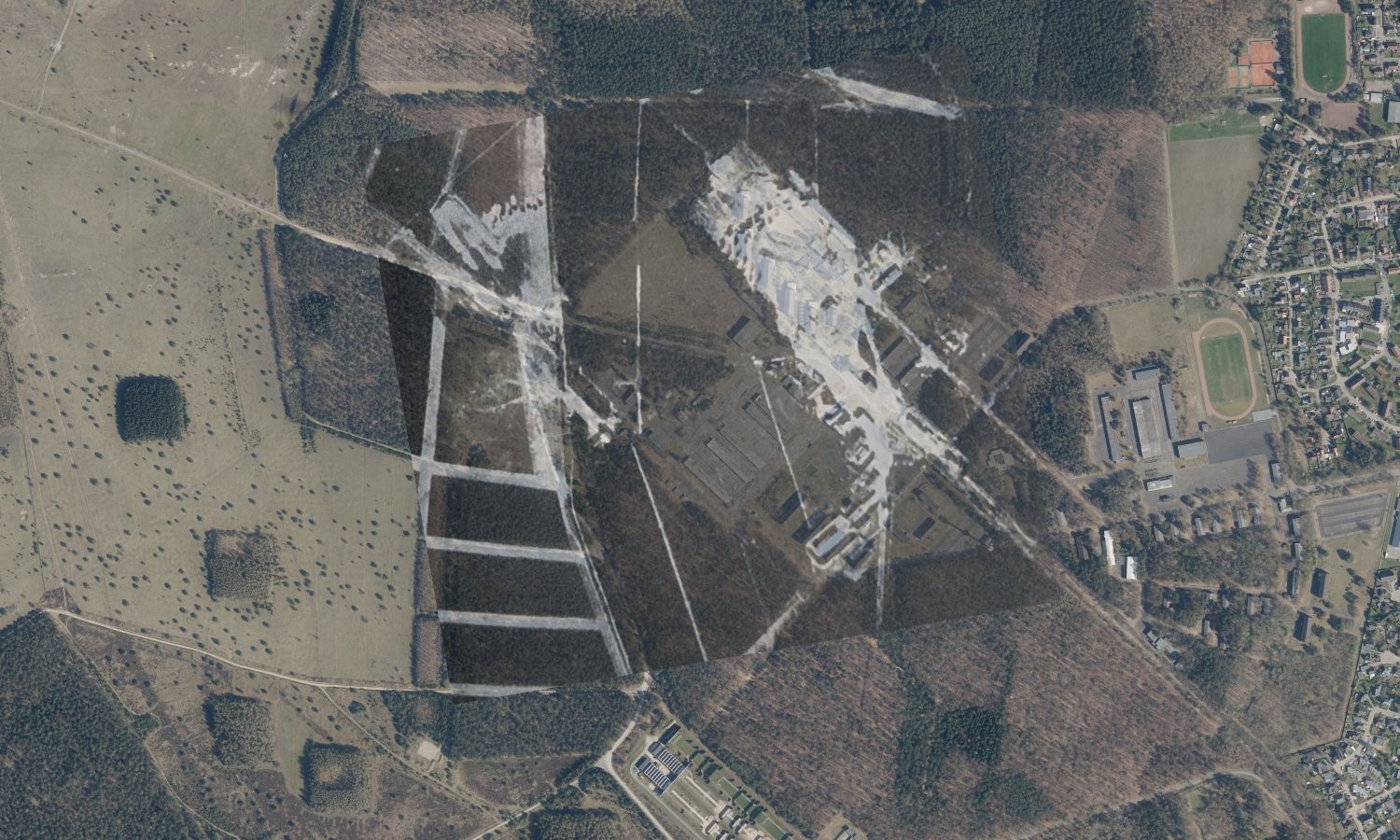
1. Firing positions, 2. Bed with the firing frame, 3. Network of the standard gauge railway, 4. Hall complex, ammunition bunker / Photo ca.1943
1. New firing position, 2. Old firing position with the large firing frame, 3. Test area with launch ramps for cruise missiles and glide bombs / Photo after the end of the war in 1945.
Blick auf die alte Schießbasis, ganz rechts das große Schießgerüst (nicht zu sehen). Hintergrund die Beschußstände (helle Würfel), davor der Montageturm der V2 (Operation Backfire-1945).
Quelle: http://www.v2rocket.com
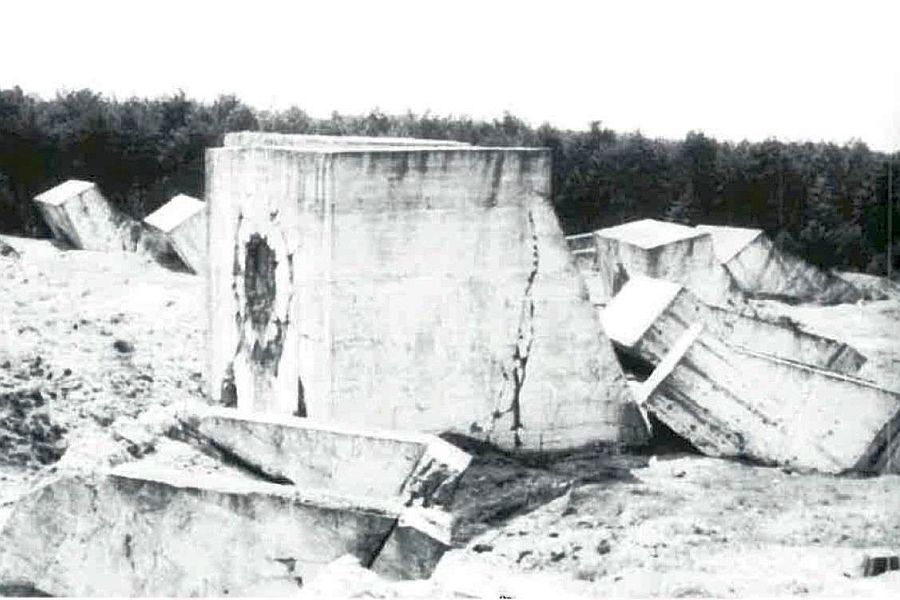
The firing positions at the end of the 1950s at the beginning of the demolition.Source: MB
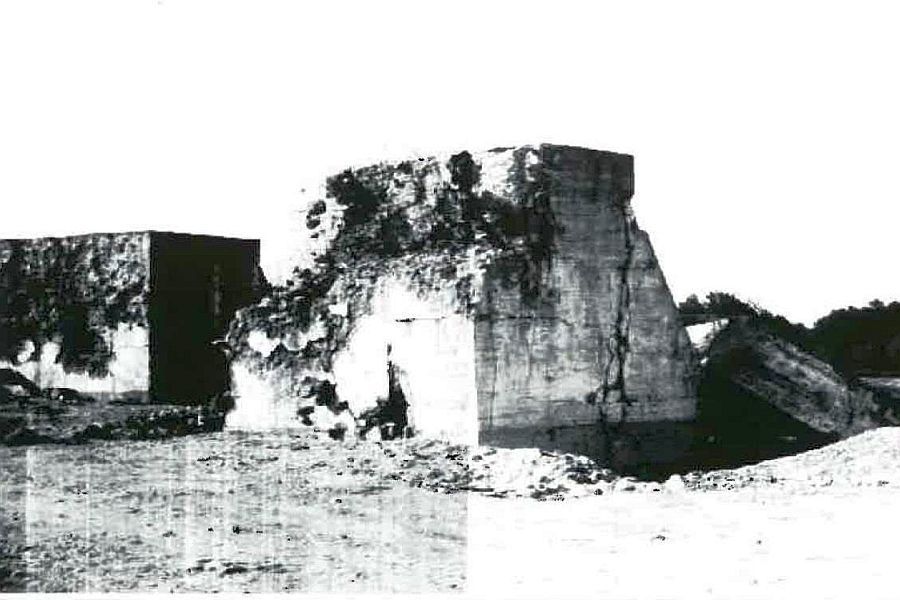
The concrete recycling resulting from the demolition was used, among other things, in embankment construction.Source: MB
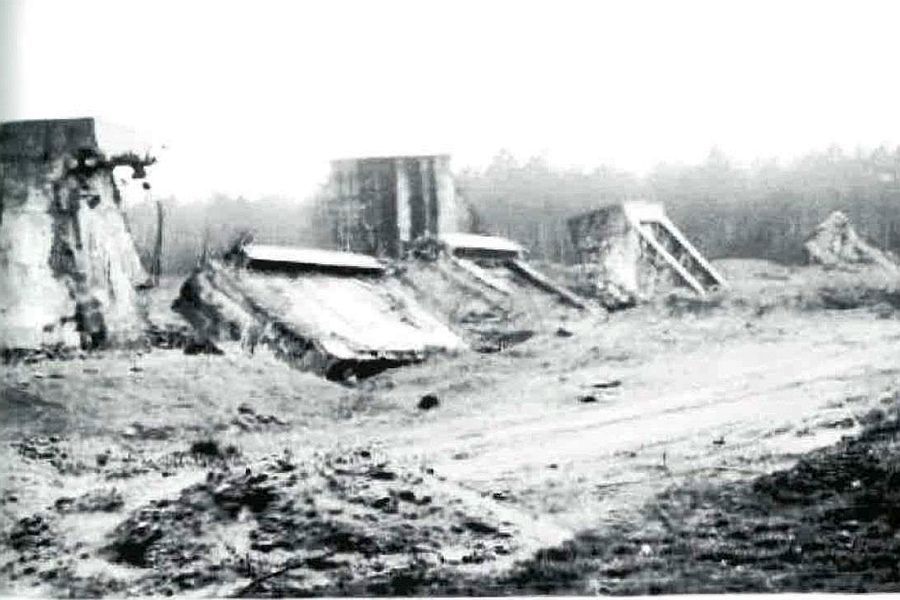
The demolition of the firing positions began in 1959 and ended in 1962.Source::MB
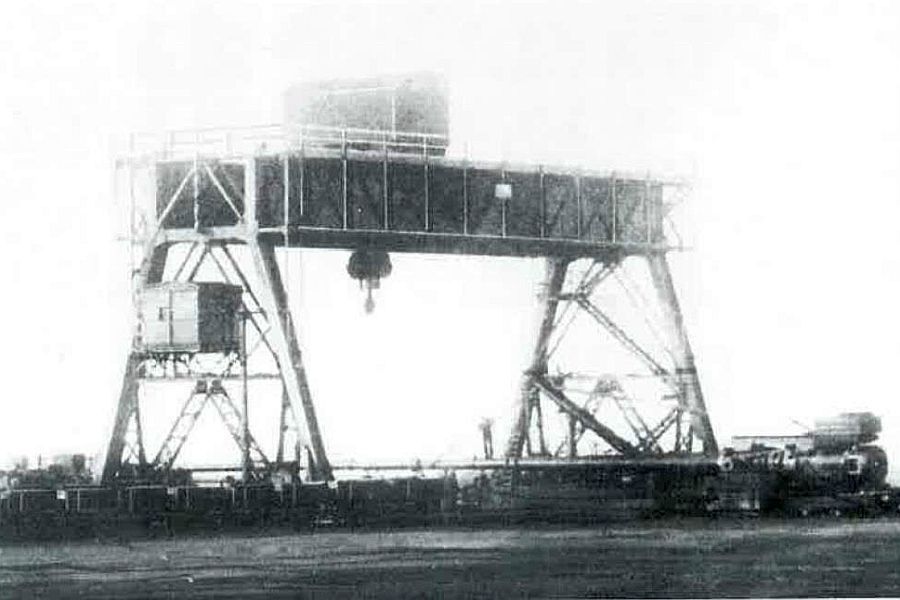
Die bis 1947 bestehende 160 Tonnen Portalkrananlage wurde bereits während des ersten Weltkriegs genutzt, hier beim Aufbau des Ferngeschützes 'Wilhelm'. Die britischen Streitkräfte sprengten die Krananlage und den Abschussturm der Geschützbettung am 10.12.1947, die endgültige Demontage der Bettung selbst erfolgte 1948.
Quelle: M.B.
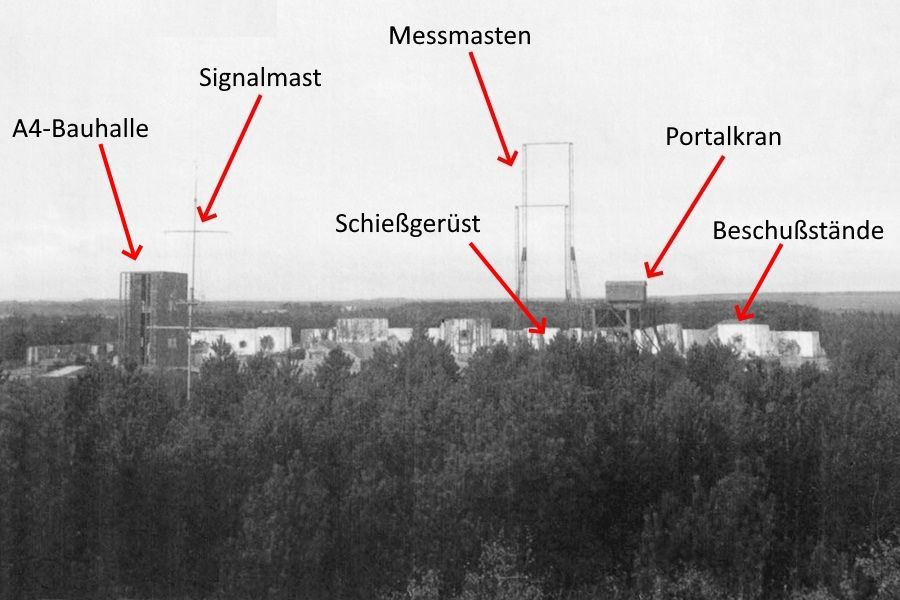
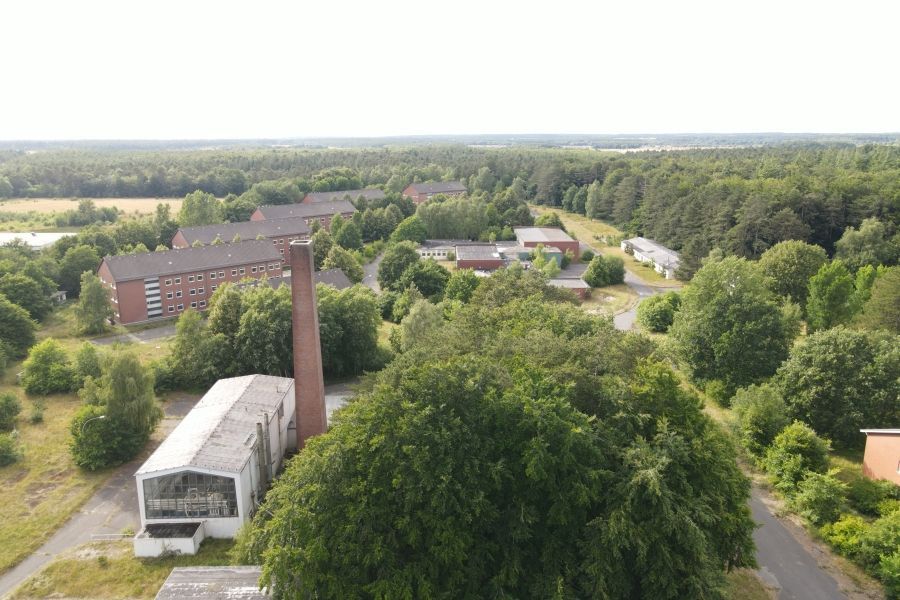
Two different photos, the same place. In the photo from 1946, the firing positions are in the background. In front of it on the right is the firing rack, on the left is the production tower for the V2 (Operation Backfire/1945). In front of it is the distinctive signal mast that can already be seen in older photos from before 1918. View from the east. The photo from 2023 shows the barracks area of the former Panzergrenadier Battalion 71/73. Source: http://www.v2rocket.com

Das Schießgerüst mit dem Portalkran, davor eine A4/V2 (Britische Operation Backfire/1945). Blick aus Südwest.
Quelle: http://www.v2rocket.com
The signal mast at the end of the war in 1945 can also be seen in various other photos and was already in this position before the start of the First World War.
Quelle: http://www.v2rocket.com

The signal mast in July 1917, in the background the long-range gun "Wilhelm" is firing.Source: http://www.v2rocket.com
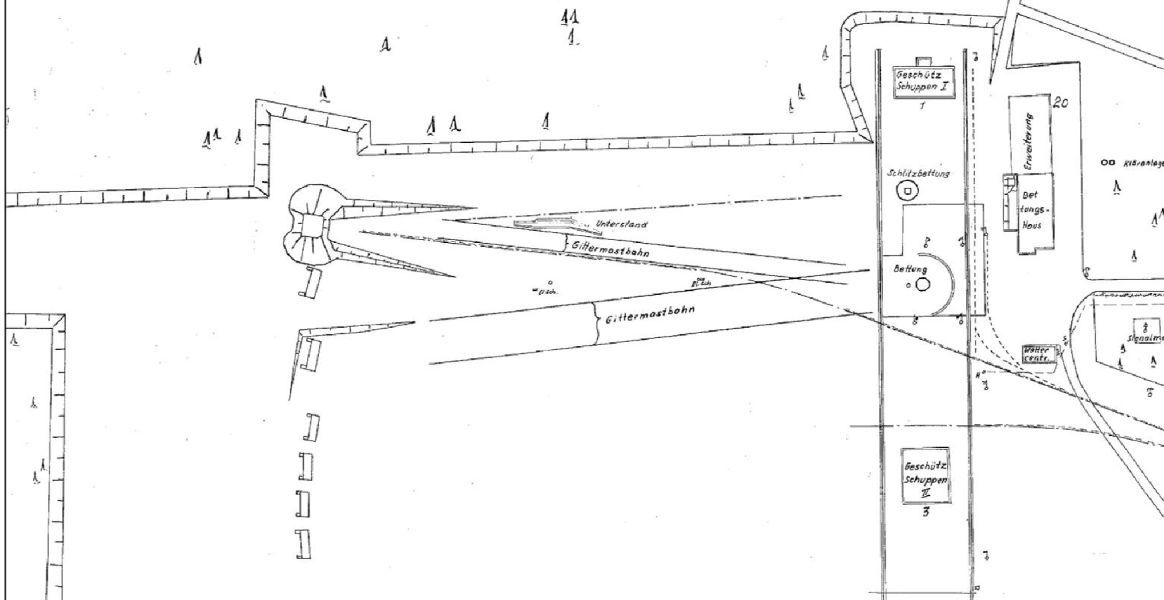
Short-range test shots were fired either at the concrete hard targets or directly into a bullet trap bunker in front of the bullet trap, which was located at the end of one of the lattice mast tracks. The projectile was measured during its short flight. This was done using two hanging rings that were suspended at a certain distance. They were placed so that the shot flew directly through them. As the grenade passed through the rings, a magnetic field that was generated changed. This anomaly then made it possible to record the relevant values.
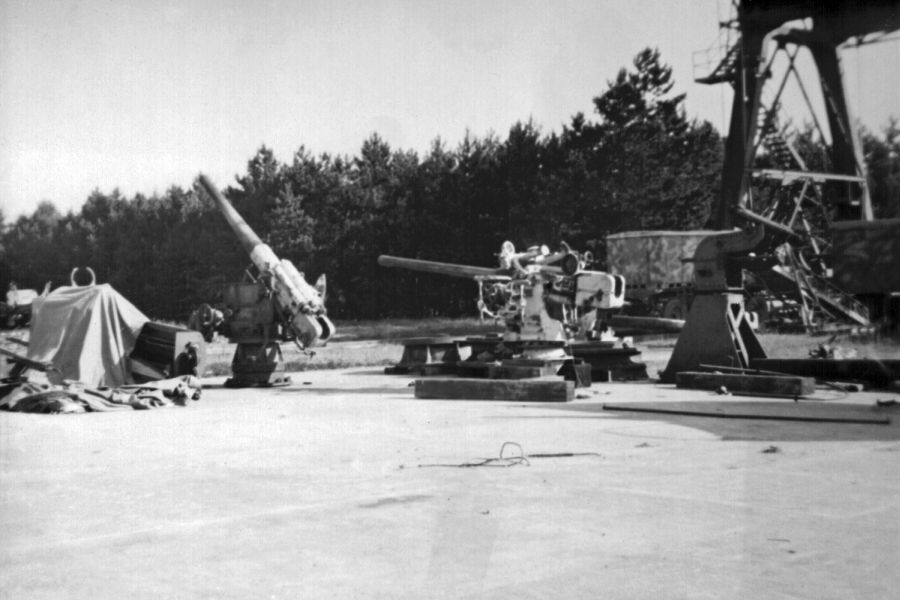
In the slotted bed in front of the gun rig at the old firing position, there were a variety of naval guns. These were used to fire shots at the concrete positions in order to evaluate the effect of the ammunition. On the left, probably an 8.8 cm SK C/30 in MPL C/30 version. On the right, an 8.8 cm SK C/35 in Ubts LC/35. Source: http://www.v2rocket.com, https://www.forum-der-wehrmacht.de (Schorsch)

The "new" firing position was located at the height of today's West Gate, a former tank washing facility. Source: http://www.v2rocket.com
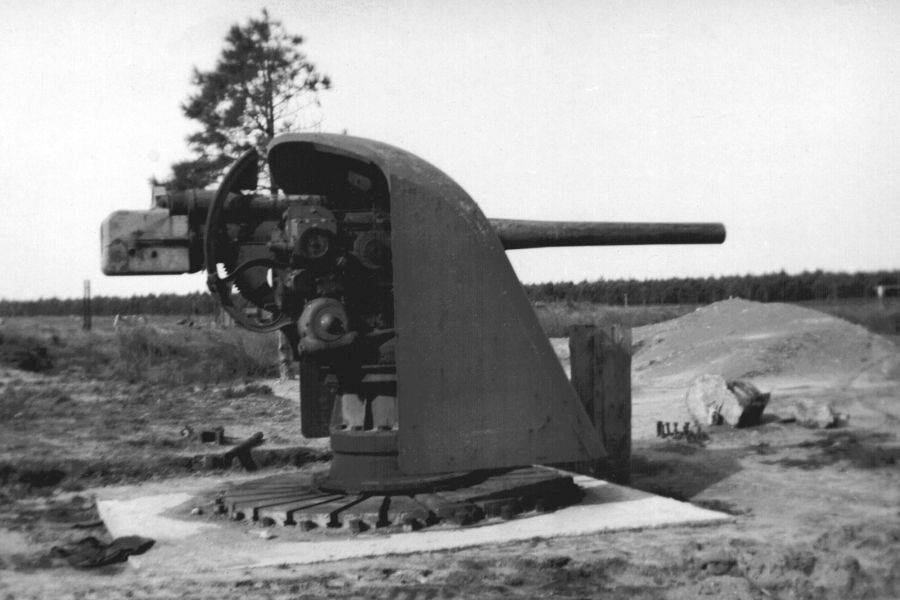
An 8.8 cm SK L/45 naval gun on a slotted bed. This gun type was also used as an anti-aircraft gun in the Stand Heide battery at the beginning of the war. At the Altenwalde firing range, this was apparently used for test firing for ammunition checks. Source: http://www.v2rocket.com

Eine 15 cm Feldkanone K 18 auf dem Versuchsgelände nach dem Krieg. Im Hintergrund die Beschussstände.
Quelle: http://www.v2rocket.com
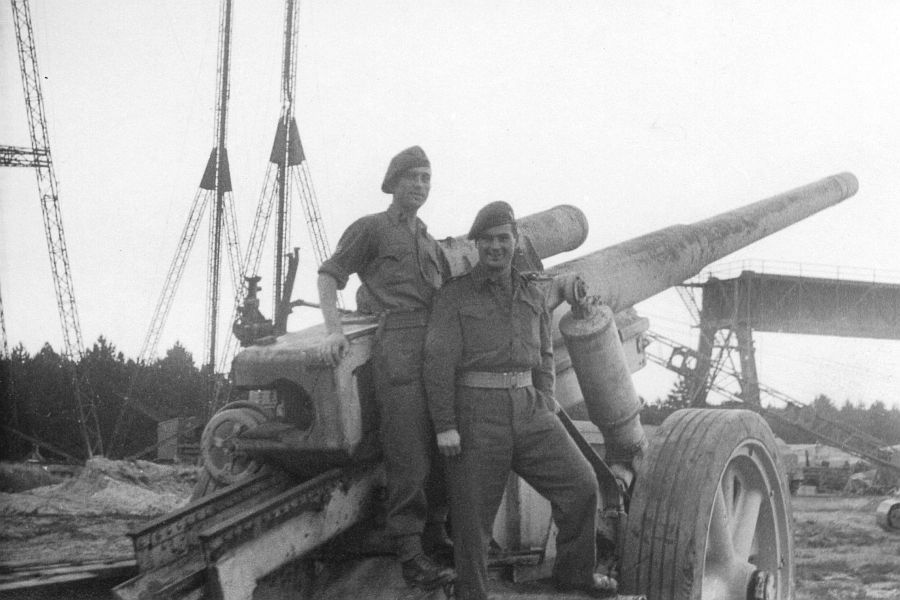
The same gun with two British soldiers. In the background on the left are the lattice mast tracks, on the right the gantry crane. Source: http://www.v2rocket.com
1. New firing position, 2. Old firing position with the large firing frame, 3. Test area with V1 launch ramp / Photo after the end of the war in 1945.
Legende:
- Kranbahn der Bettungen
- Großes Schießgerüst
- Fahrzeugschuppen
- Material-Lagerhaus
- Platzkommandantur
- Maschinenhaus, dahinter der Lokschuppen
- Telekommunikations-Werkstatt
- Munitionslagerschuppen 2
- Halle in Holzkonstruktion, Nutzung nicht bekannt.
- Muntionslagerschuppen 1
- Standort des Signalmastes.
- Schuppen 1
- Pulverwärmehaus
- Kartuschenhaus
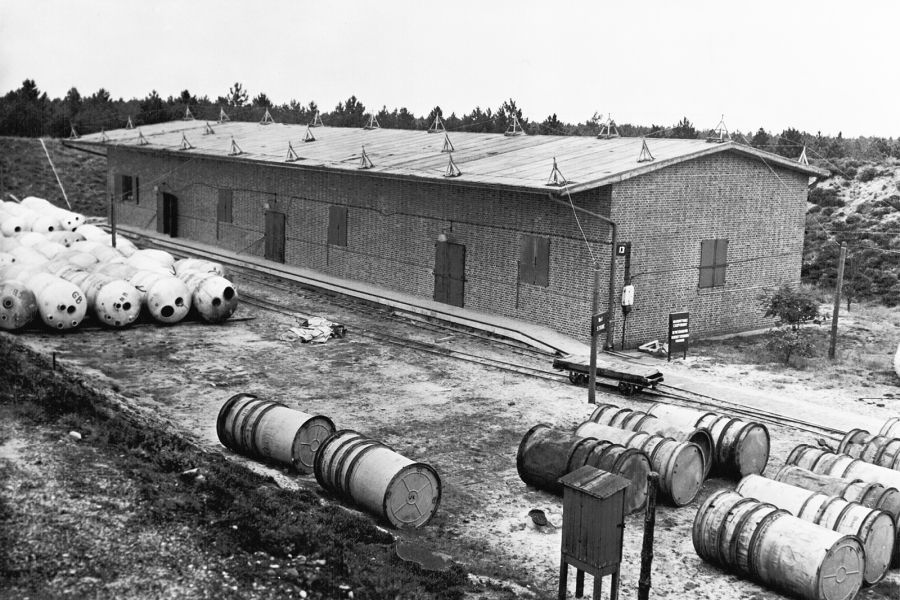
Building No. 10, the ammunition warehouse 1 with a railway connection. It is located in a depression and is surrounded by a wall on three sides. The roof is apparently a lightning protection system that was already in place at the time. The containers in front of it are components for the Aggregate 4 (V2), which were collected here after the war for Operation Backfire. Source: http://www.v2rocket.com

Building No. 8, Ammunition Storage Shed 2 is also equipped with lightning protection. The black object on the right of the roof is an air raid siren. Source: http://www.v2rocket.com

The centrally located material warehouse No.4. To the right, the assembly hall for A4/V2 components, built in 1946. Source: http://www.v2rocket.com

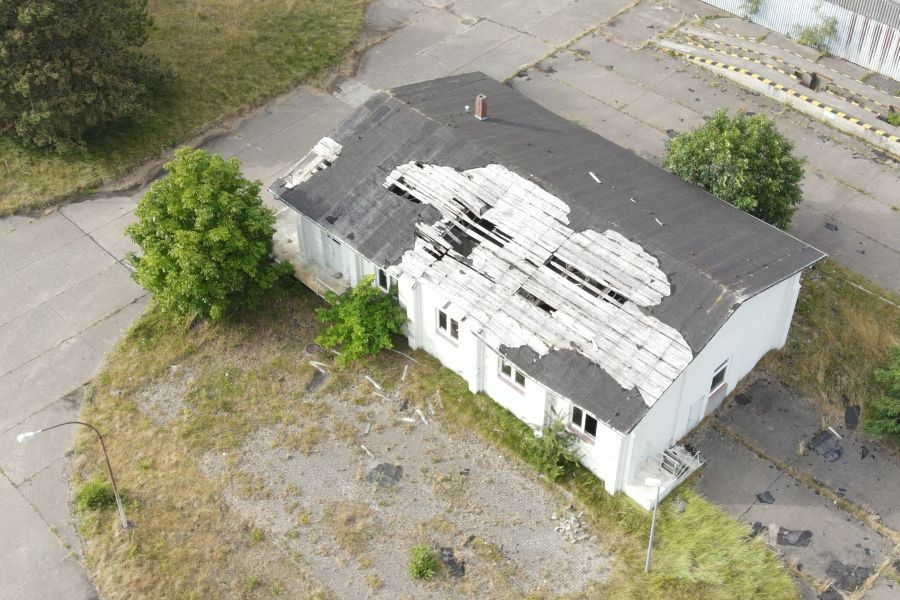
The building (material house) built in 1935 today. During the Bundeswehr era, it served as a carpentry workshop. Source: MB
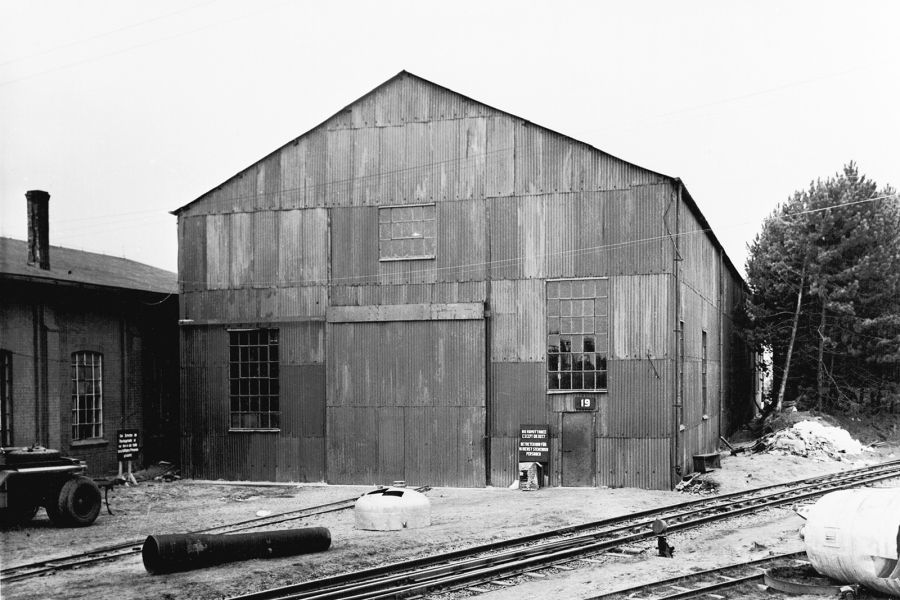
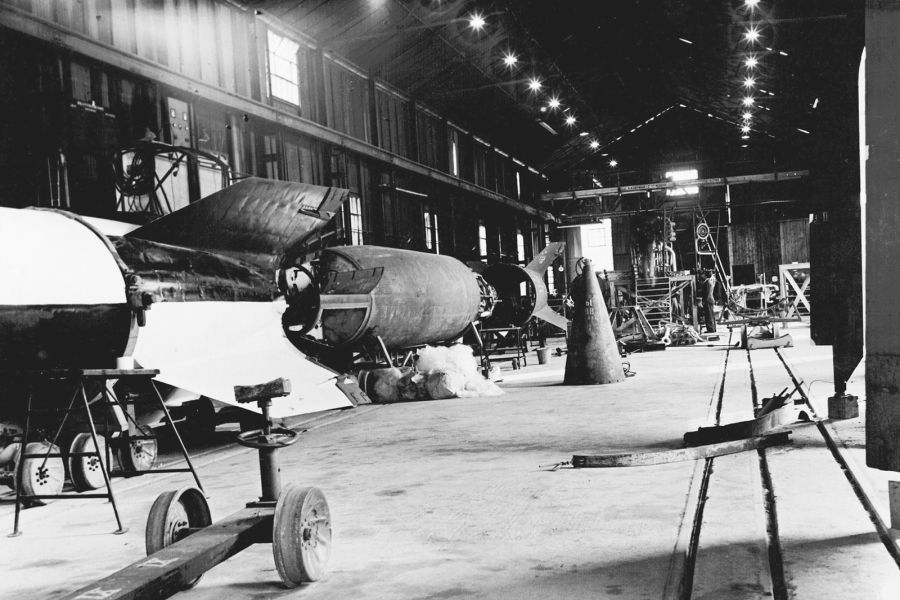
The assembly hall adjacent to the material house was built in 1945 for the assembly of A4/V2 components during Operation Backfire. Source: http://www.v2rocket.com
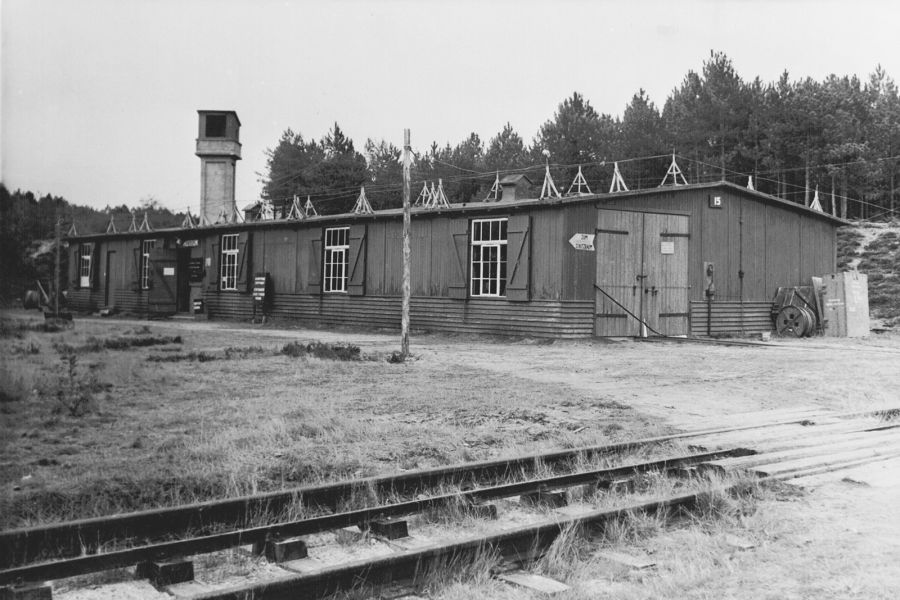
Building No.12, Shed 1 .Source: http://www.v2rocket.com
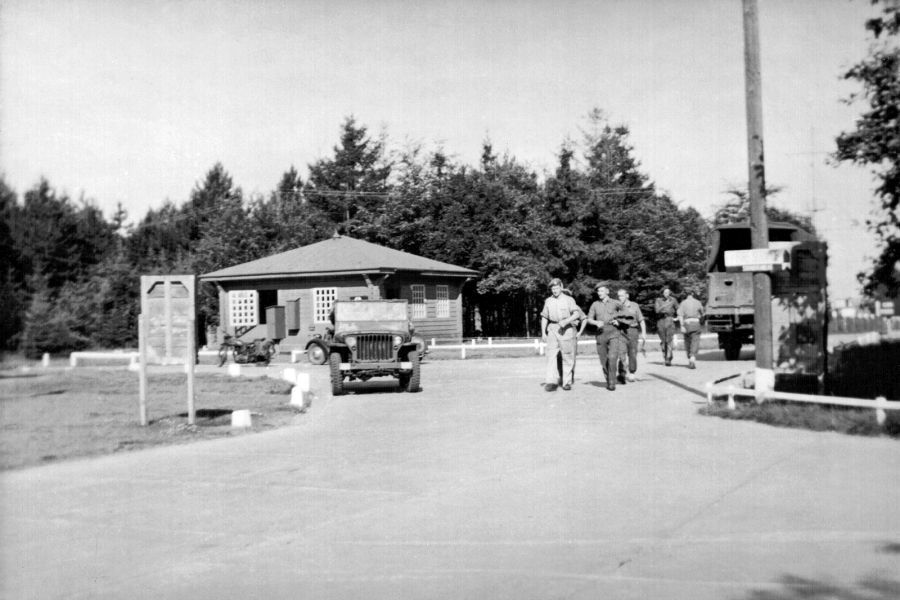
Building No. 7, the telecommunications workshop, on the main road to the bedding and firing positions. The signal mast can be seen in the background on the right. To the right is the firing range command post.Source: http://www.v2rocket.com
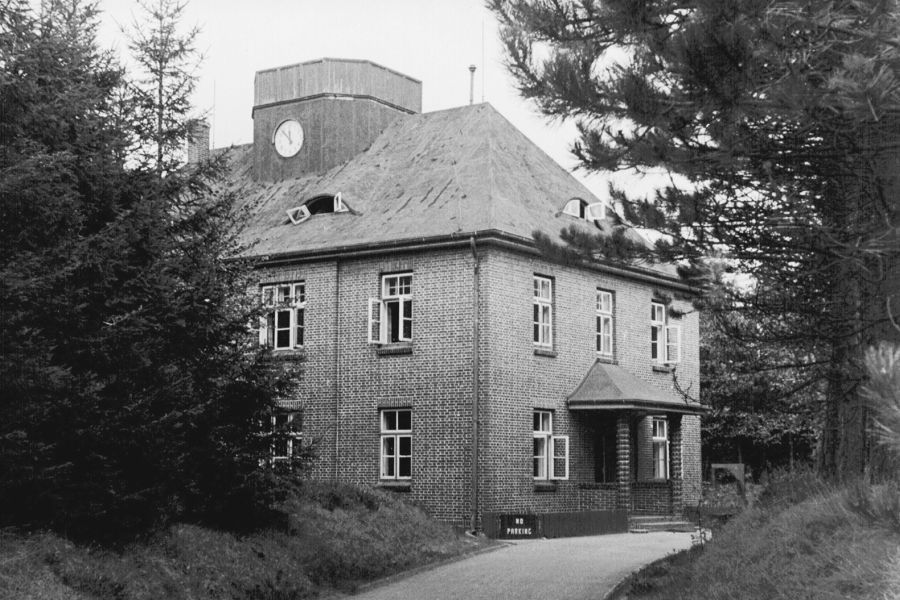
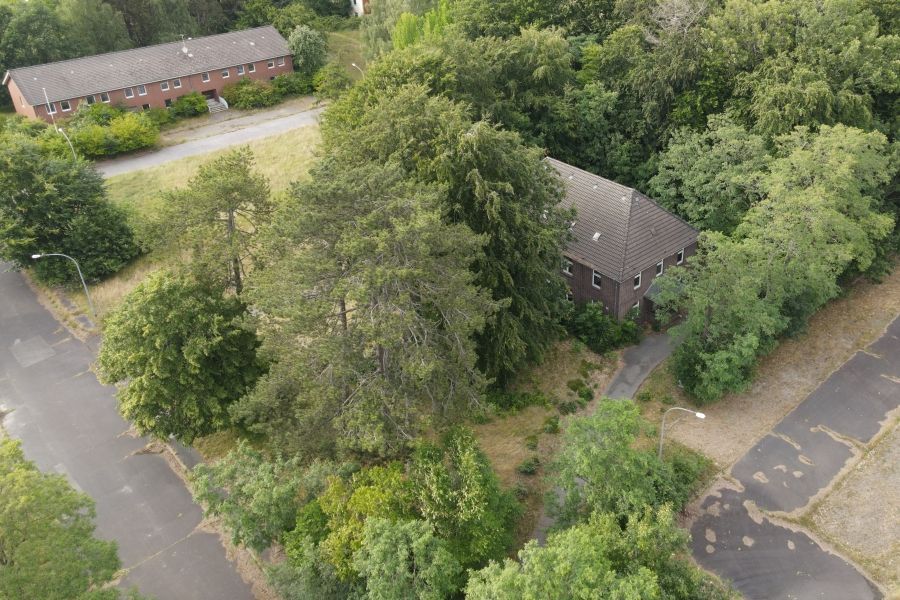
The photo from 1945, building no. 5, the firing range command post. On top was a light anti-aircraft gun, which probably belonged to the 6./ M.FLA.A 214. This base is identical to other anti-aircraft gun stands in the city of Cuxhaven. Photo 2023, the building that is still standing today. Source: http://www.v2rocket.com
Die Gleisanlagen des kombinierten Schienennetzes von Normal- und Schmalspurbahn auf dem Areal des Schießplatzes.
Quelle: http://www.v2rocket.com
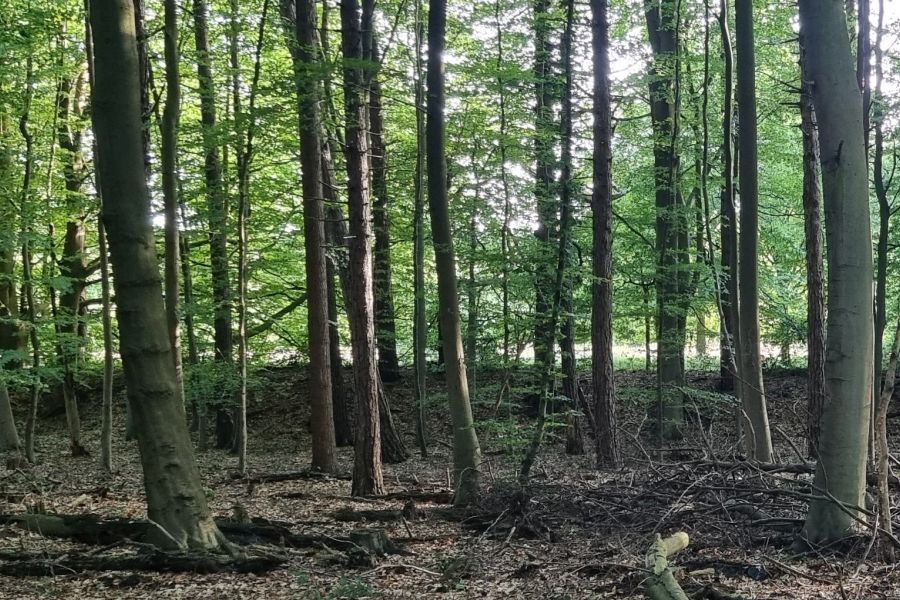
The bullet trap of the facility is still clearly visible today. Concrete remains and isolated ruins can also be seen in the landscape.Source: http://www.v2rocket.com
Photo left 2022
Red area: Old naval artillery firing range
Yellow Area: New Marine Artillery Range
Blue area: rocket test area Fi103 (V1) and BV143
Photo right 2022
Especially in autumn, the changing colour of the leaves makes it possible to see the new planting of the eastern border of the former shooting lane, which was cleared at the time to mark the boundary.
Dank für die Hintergrundinformationen und Unterstützung zu diesem Thema gilt vor allem :
Gerd Wildfang - Military buildings of the Cuxhaven Fortress
The website - http://www.v2rocket.com/




